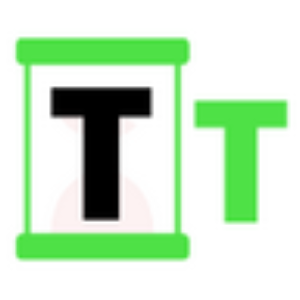XRP Ledger Enters Full Web3 Interoperability
4 min read
A recent announcement from Krippenreiter highlights a significant development involving the XRP Ledger (XRPL) ecosystem. According to Krippenreiter, the XRPL has successfully integrated with the broader Web3 blockchain ecosystem through the launch of the XRPL EVM sidechain in collaboration with Axelar and Squid. This development introduces seamless interoperability with more than 80 blockchain networks, marking a substantial milestone for the XRPL’s evolution. Krippenreiter explains that this integration fundamentally transitions XRPL from being an isolated network into one that is deeply connected with the Web3 ecosystem. The onboarding process enables XRPL to access bridging protocols, liquidity sources, and decentralized applications (dApps) that operate across multiple chains. This expansion was made possible by the XRPL EVM sidechain, the Axelar interoperability network, and the cross-chain swap protocol Squid. [1/ ] XRP Ledger Axelar XRPL EVM Sidechain Squid With all these new integrations and partnerships, I bet you are pretty much overwhelmed by all the alien-like jargon. A little vocabulary crash course ahead pic.twitter.com/oNY0RYt3ZC — Krippenreiter (@krippenreiter) June 30, 2025 Functional Overview of the XRPL EVM Sidechain The XRPL EVM sidechain is a newly established blockchain dedicated to the XRPL ecosystem. Krippenreiter explains that this sidechain uses the Ethereum Virtual Machine (EVM), a widely adopted engine that allows blockchain networks to execute Ethereum-compatible smart contracts. By deploying the EVM, XRPL users can now develop and interact with smart contracts that are compatible with the Ethereum ecosystem. This sidechain functions as a “sidechain” to the XRPL because it shares XRP as a native token between both networks. The connection maintains a one-to-one ratio of bridged XRP between the XRPL mainnet and the XRPL EVM sidechain. The bridging process is powered by Axelar’s decentralized interoperability protocol, ensuring secure and efficient asset transfers. Krippenreiter emphasizes that the infrastructure supporting the XRPL EVM sidechain was developed by Peersyst , a blockchain engineering company, ensuring a robust and scalable foundation for this new ecosystem expansion. Role of Axelar and Squid in the Integration Axelar plays a critical role in facilitating this interoperability. According to Krippenreiter, Axelar functions as a trustless and decentralized interoperability network. Its core component, the Interchain Token Service (ITS), manages token movements and ensures secure communication between the XRPL mainnet and the XRPL EVM sidechain. This system guarantees that bridged assets, particularly XRP , remain synchronized and secure across both blockchains. Building on top of Axelar’s network is Squid, a decentralized application (dApp) designed for cross-chain swaps. Squid simplifies the token exchange process by enabling users to perform any-to-any token swaps with ease. This application enables tokens on XRPL to interact seamlessly with tokens from more than 80 other blockchain networks. The Squidrouter acts as the interface that users interact with when exchanging tokens between chains. It provides access not only to swaps but also to decentralized applications operating across different networks. The Functionality of CORAL and Its Significance Krippenreiter further details the introduction of CORAL, a Cross-Chain Order Routing and Auction Layer integrated into Squid. CORAL enhances liquidity by minimizing reliance on the underlying blockchains and messaging protocols whenever possible, optimizing the swap process for users. CORAL utilizes a Request-For-Quote (RFQ) auction model to match trade requests with market makers. This model brings price certainty and reliability to swaps, differing from the traditional automated market maker (AMM) approach. An important feature of CORAL is its intent-based design. This means that users specify their desired outcome—such as swapping Token A for Token B—and the system automatically determines the most efficient way to execute the swap. The process is handled by “solvers,” which can be systems, bots, or other mechanisms capable of fulfilling the user’s intent. Krippenreiter highlights that this entire process is abstracted for users. Individuals engaging in cross-chain swaps do not need to interact with the complex backend mechanisms, making the user experience significantly more streamlined. Conclusion of the Integration Milestone Krippenreiter concludes by underscoring the impact of this development. The XRPL and XRP are no longer isolated ecosystems. With the integration of Axelar, the XRPL EVM sidechain, Squid, and CORAL, XRP now has direct interoperability with a wide array of blockchain networks. Users can swap tokens across chains, access liquidity aggregated from multiple sources, and participate in decentralized finance (DeFi) ecosystems beyond the XRPL. Disclaimer : This content is meant to inform and should not be considered financial advice. The views expressed in this article may include the author’s personal opinions and do not represent Times Tabloid’s opinion. Readers are advised to conduct thorough research before making any investment decisions. Any action taken by the reader is strictly at their own risk. Times Tabloid is not responsible for any financial losses. Follow us on X , Facebook , Telegram , and Google News The post XRP Ledger Enters Full Web3 Interoperability appeared first on Times Tabloid .

Source: TimesTabloid



